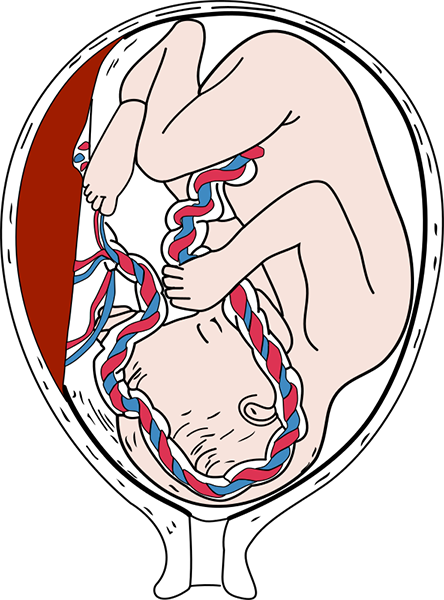
Labour is a critical and often stressful time for expectant mothers. One of the common procedures during this period is the internal or vaginal examination. These examinations are performed to assess the progress of labour by checking the dilation of the cervix, the position of the baby, and other factors. However, the necessity and frequency of internal examinations during labour have been subjects of debate among healthcare professionals and expectant mothers alike.
What Are Internal Examinations?
Internal examinations involve a healthcare professional inserting gloved fingers into the vagina to assess the cervix and the baby’s position. This procedure helps determine how far along labour is and whether it is progressing as expected. Typically, these examinations are conducted at regular intervals, such as every four hours, or whenever there is a perceived change in labour progress.
Key Reasons for Internal Examinations During Labour
Assessing Cervical Dilation and Effacement
Cervical Dilation:
Internal examinations help determine how much the cervix has opened (dilated) from 0 to 10 centimetres. Full dilation is necessary for the baby to pass through the birth canal.
Cervical Effacement:
Effacement refers to the thinning and shortening of the cervix. This process, measured in percentages, is crucial for labour to progress.
Monitoring Labour Progress
By regularly assessing the cervix, healthcare providers can determine which stage of labour the mother is in latent phase, active phase, or transition phase. This helps in anticipating the timeline and necessary interventions.
Rate of Progress:
Tracking how quickly or slowly the cervix is dilating helps identify if labour is progressing normally or if it’s prolonged, which might require medical interventions.
Determining Foetal Position and Station
The baby’s position (e.g., head-down, breech, or transverse) can significantly impact the labour and delivery process. Knowing the position helps in planning the safest delivery approach.
Foetal Station:
This refers to the baby’s descent through the pelvis, measured in relation to the ischial spines of the pelvis. It indicates how far the baby has moved down the birth canal.
Identifying Complications
Umbilical Cord Prolapse:
An internal examination can detect if the umbilical cord has slipped into the birth canal ahead of the baby, a serious condition that requires immediate intervention.
Membrane Status:
Checking if the amniotic sac has ruptured (water broken) is essential, as prolonged rupture without delivery increases the risk of infection.
Guiding Pain Management and Interventions
Epidural Timing:
Understanding the stage of labour helps in timing pain relief interventions, such as epidurals, ensuring they are administered safely and effectively.
Decision-Making:
In cases where labour is not progressing as expected, internal examinations inform decisions about using medications like oxytocin to augment labour or considering a caesarean section.
Tailoring Individualized Care
Personalized Approach:
Each labour is unique. Regular internal examinations allow healthcare providers to tailor their approach to the specific needs and progress of the mother, enhancing the overall birth experience.
Are Internal Examinations Necessary?
The necessity of internal examinations during labour is not a one-size-fits-all issue. For some women, especially those with high-risk pregnancies or signs of labour complications, these examinations are crucial. They provide valuable information that can guide critical decisions, ensuring the safety of both mother and baby.
However, for low-risk pregnancies, the frequency and necessity of internal examinations can be reconsidered. Many midwives and obstetricians advocate for a more individualized approach, assessing each situation on a case-by-case basis rather than adhering to a strict protocol. All medical examinations depend upon the skill and experience of the examiner.
Conclusion
Internal examinations during labour are essential for monitoring and managing the labour process. They provide critical information on cervical dilation, effacement, foetal position, and potential complications, guiding necessary interventions to ensure the safety and well-being of both mother and baby. By understanding the reasons behind these examinations, expectant mothers can feel more informed and prepared, contributing to a more positive birthing experience.

References
- National Institute for Health and Care Excellence (NICE) – Intrapartum Care
- American College of Obstetricians and Gynecologists (ACOG) – Obstetric Care Consensus
- World Health Organization (WHO) https://www.who.int/publications/i/item/9789241550215
RECENT POSTS
- The Differences in a Twin Pregnancy: What You Need to Know
- What is the significance of bleeding at different stages of pregnancy?
- How to Cope with Claustrophobia: Effective Strategies for Managing Anxiety
- 50 Great Bible Quotes Relating to Pregnancy
- 10 Tips for Getting a Baby to Sleep
- How Much Sleep Does a Baby Need? A Comprehensive Guide for New Parents
- How to Make Money with ChatGPT: A Comprehensive Guide
- Unexplained Infertility: What Can You Do. Advice and Guidance
- The Benefits of Mindfulness: A Practical Guide to a Healthier and Happier Life
- Constipation During Pregnancy: Causes, Prevention, and Relief
- Pregnancy Myths, Superstitions, and Old Wives’ Tales: Fact or Fiction
- Endometriosis: The Impact on Fertility and Pregnancy
- Disabled and Pregnant: Equality Problems and Solutions
- Meconium Clinical Significance and Warning Signs
- Hypnosis in Pregnancy and Delivery: A Comprehensive Guide
- Pregnancy Tests: What is Amniocentesis? Your Complete Guide.
- Study at Home for a New Job or New Career: Your Path to Success
- What is Advanced Maternal Age?
- Essential Guide to Changes in Pregnancy
- Buying for a New Baby: The Essentials
Leave a Reply